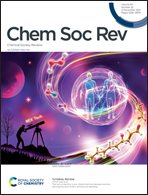The characterization of protein interactions – what, how and how much?†
Abstract
Protein interactions underlie most molecular events in biology. Many methods have been developed to identify protein partners, to measure the affinity with which these biomolecules interact and to characterise the structures of the complexes. Each approach has its own advantages and limitations, and it can be difficult for the newcomer to determine which methodology would best suit their system. This review provides an overview of many of the techniques most widely used to identify protein partners, assess stoichiometry and binding affinity, and determine low-resolution models for complexes. Key methods covered include: yeast two-hybrid analysis, affinity purification mass spectrometry and proximity labelling to identify partners; size-exclusion chromatography, scattering methods, native mass spectrometry and analytical ultracentrifugation to estimate stoichiometry; isothermal titration calorimetry, biosensors and fluorometric methods (including microscale thermophoresis, anisotropy/polarisation, resonance energy transfer, AlphaScreen, and differential scanning fluorimetry) to measure binding affinity; and crosslinking and hydrogen-deuterium exchange mass spectrometry to probe the structure of complexes.

- This article is part of the themed collection: Chemistry Biology Interface Primer


 Please wait while we load your content...
Please wait while we load your content...